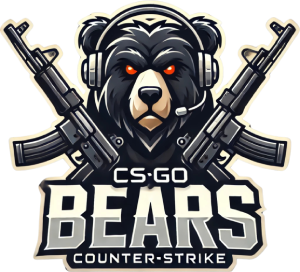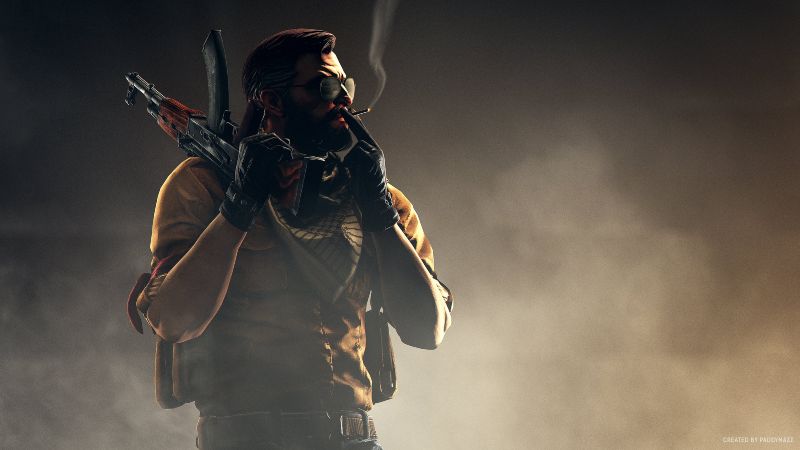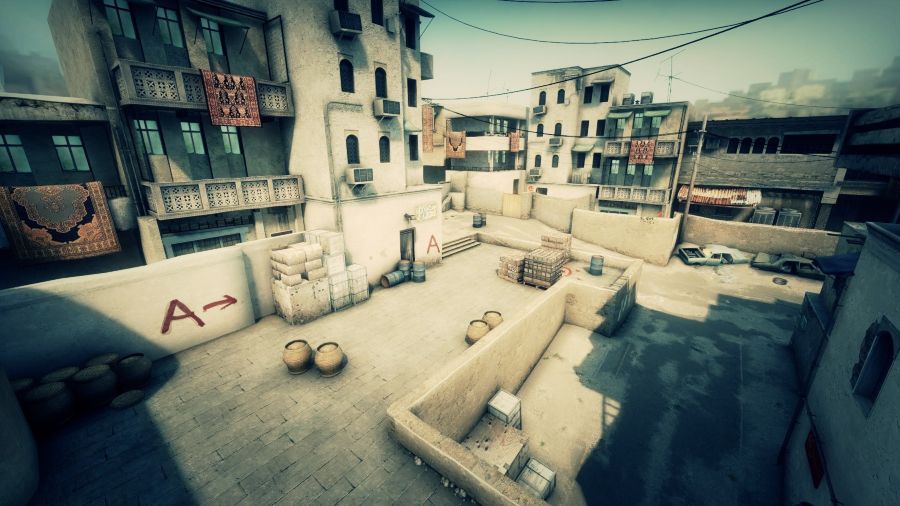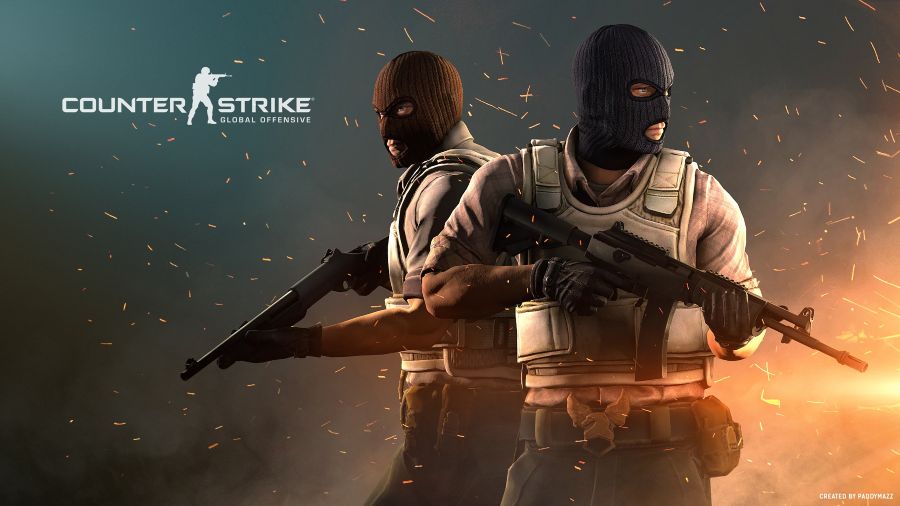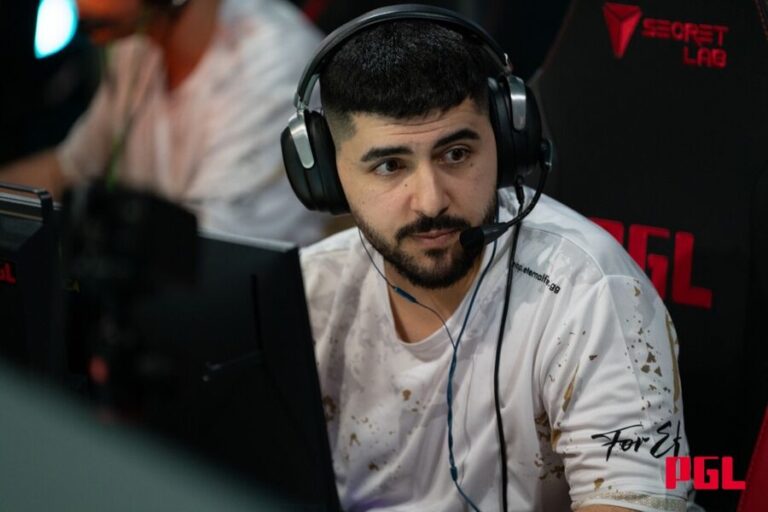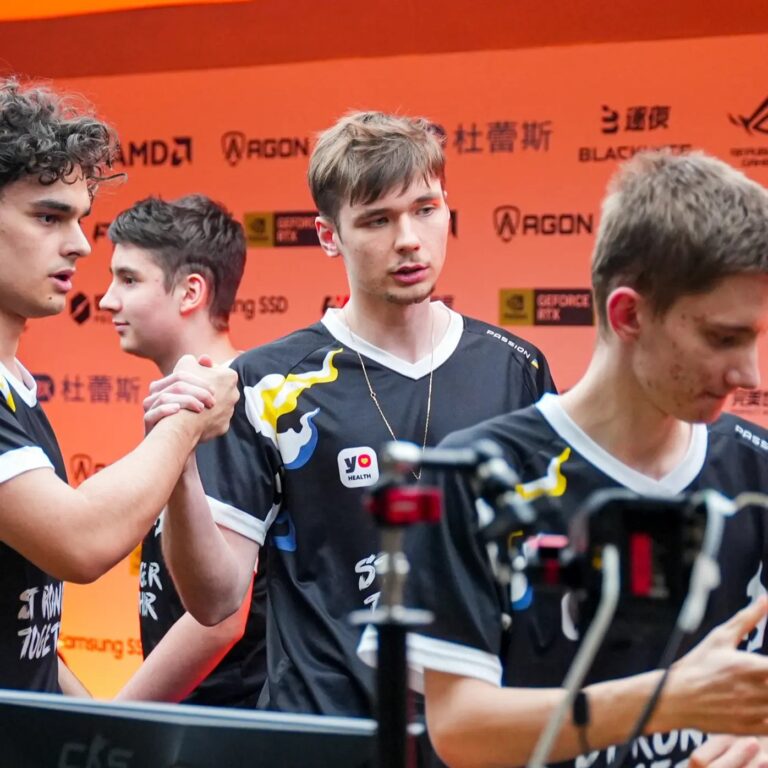Counter-Strike 2 (CS2) is the next evolution of one of the most iconic competitive games, offering exciting upgrades and fresh opportunities for players of all skill levels. Whether you’re a seasoned veteran transitioning from CS:GO, or a newcomer curious about diving in, getting started with CS2 is simpler.
With comprehensive Counter-Strike 2 coverage, this guide will walk you through every essential step—from installing the game to understanding its mechanics, maps, and weapons. By following these actionable tips and insights, you’ll be ready to jump into the action and make the most of everything CS2 has to offer.
How to Install Counter-Strike 2?
Installing CS2 is a straightforward process, especially for those familiar with Steam. If you’re new to the platform, don’t worry—this guide will break it down step by step.
Download Steam
First, head over to Steam’s official website and download the client. Steam is the platform that hosts CS2 and many other popular games. Install the client and create a free account if you don’t already have one.
Search for Counter-Strike 2
Once logged in, navigate to the store section and search for “Counter-Strike 2.” The game should appear in the results. Add it to your library and initiate the download.
Install and Verify
After downloading, launch the game installer and follow the prompts to complete the installation. For a smooth experience, verify the integrity of the game files through Steam. This ensures that no files are missing or corrupted.
Optimize Settings
Before jumping into your first match, adjust your graphics, sound, and control settings. Proper optimization ensures the game runs smoothly, especially on older systems.
Do Skins and Items Transfer from CS:GO to CS2?
One of the biggest concerns for long-time CS:GO players transitioning to CS2 is whether their cherished inventories will carry over. The answer is a resounding yes. All skins, weapon finishes, stickers, and other inventory items seamlessly transfer to CS2. Not only that, but these items receive a visual upgrade thanks to the Source 2 engine, which enhances their textures, lighting, and overall appearance. Following the CS2 release date in 2023, players were reassured that their investments in CS:GO would remain relevant and visually enhanced in the new game.
This continuity underscores Valve’s commitment to player satisfaction. If you’ve spent years building your collection, you can enjoy these items in CS2 without missing a beat. Additionally, the transfer process is automatic. Upon launching CS2 for the first time, your CS:GO inventory will already be available.
CS2 Rounds
The round structure in CS2 is the foundation of its competitive gameplay. While the core mechanics remain similar to CS:GO, subtle changes improve balance and pacing. Each match consists of two halves, switching teams between Terrorists (T) and Counter-Terrorists (CT). Matches are won by either planting/defusing the bomb or eliminating the opposing team.
Key Round Phases
Pistol Round
The opening round of each half. Players start with limited funds, so choices are critical. Most opt for pistols and a utility piece, like a smoke or flash grenade.
Eco Round
When funds are low, teams may save money for future rounds by purchasing minimal equipment. This strategy allows for a full buy later.
Gun Round
Teams purchase rifles, utility, and armor for a full buy. These rounds often define the momentum of the match.
Each phase demands a different approach. For example, pistol rounds prioritize accuracy, while gun rounds require a balanced strategy involving utility and positioning. Understanding how these phases flow is crucial to becoming a well-rounded player.
CS2 Maps/Game Modes
Counter-Strike 2 revitalizes its maps and game modes, creating a gaming environment that feels familiar to veterans and enticingly new for beginners. Classic maps like Dust II, Inferno, and Mirage—longtime staples of the Counter-Strike series—have undergone significant visual and functional upgrades. The enhanced lighting, texture details, and improved environmental effects make these maps more immersive and serve a tactical purpose. The increased visual clarity helps players spot opponents in dimly lit areas, identify utility usage more effectively, and plan their movements more precisely. For example, the once-shaded corners of Dust II’s B-site are now brightly illuminated, giving players more confidence in their tactical choices.
In addition to visual improvements, subtle layout tweaks on certain maps enhance gameplay flow. For instance, Inferno’s iconic Banana area now provides clearer sightlines, encouraging dynamic battles between Terrorists and Counter-Terrorists. Similarly, Mirage retains its strategic complexity while offering smoother pathways for rotations, ensuring balanced engagements. These reimagined designs breathe new life into the maps while retaining their core identity, making them equally enjoyable for longtime players and newcomers.
Game Modes Overview
Counter-Strike 2 features a robust variety of game modes that cater to diverse playstyles and preferences. Whether you’re a casual gamer looking for light-hearted fun or a competitive enthusiast seeking intense battles, there’s a mode for everyone.
Competitive Mode
This is the traditional 5v5 mode where matches revolve around bomb defusal scenarios. It’s the ultimate test of skill, strategy, and teamwork. Players face penalties for leaving or disruptive behavior, ensuring a serious atmosphere where every decision counts. Success in this mode heavily depends on precise communication and map awareness.
Casual Mode
A toned-down version of Competitive, Casual mode allows players to enjoy the gameplay without the stress of penalties or strict coordination. This mode is perfect for beginners learning the ropes or those who want a more relaxed experience.
Deathmatch Mode
Deathmatch is the go-to mode for sharpening your aim and experimenting with different weapons. It’s a high-paced, free-for-all experience where respawns are instant, allowing you to practice your reflexes and weapon control without worrying about round-based strategies.
Wingman Mode
In this 2v2 mode, smaller maps and tighter action take center stage. Wingman emphasizes quick decision-making, concise communication, and close-quarter tactics. It’s an excellent mode for duos to test their synergy and develop new strategies.
Danger Zone Mode
Counter-Strike 2’s take on the battle royale genre offers a unique blend of survival and strategy. Players compete in a shrinking play area, scavenging for weapons, cash, and supplies. While it differs from traditional gameplay, Danger Zone is a fun way to break from standard matches and enjoy a new challenge.
Each mode requires players to adjust their tactics and approach. For instance, mastering callouts is critical in Competitive mode, especially on complex maps like Nuke or Overpass, where communication can make or break a round. Similarly, Deathmatch focuses purely on mechanical skill, helping players refine their aim and movement under constant pressure.
CS2 Weapons
Counter-Strike 2 boasts an impressive arsenal of weapons, each tailored to specific scenarios and playstyles. From precision rifles to close-quarters SMGs, the variety ensures that every player can find a weapon that suits their approach to combat. Understanding the strengths and limitations of these weapons is critical to becoming an effective player.
| Weapon Guide | ||
| Weapon | Type | Best Usage |
| AK-47 | Rifle | Known for its high damage output, the AK-47 is a Terrorist-side favorite. Its accuracy at mid-range, coupled with its ability to kill with one headshot through armor, makes it a lethal option. However, its recoil requires practice to control effectively. |
| M4A1-S/M4A4 | Rifle | The go-to rifles for Counter-Terrorists. The M4A1-S offers suppressed firing, making it ideal for stealthier engagements, while the M4A4 provides a higher rate of fire. Both excel in mid-range duels and are indispensable in gun rounds. |
| AWP | Sniper Rifle | The AWP is a high-risk, high-reward weapon. Its one-shot kill potential dominates long-range battles, but its slow rate of fire and high cost make it a weapon for skilled players. Positioning and timing are key to maximizing its effectiveness. |
| P90 | SMG | A beginner-friendly option, the P90’s high magazine capacity and ease of control make it perfect for close-quarters engagements. While it lacks the power of rifles, its mobility and versatility shine in eco rounds. |
| Desert Eagle | Pistol | Known as the “Deagle,” this pistol packs a punch. It rewards accuracy and patience, as landing a headshot can turn the tide of a round. However, its slow rate of fire and high recoil mean it’s better suited for experienced players. |
Weapons in CS2 are more than just tools—they’re strategic assets. Mastering their unique spray patterns and understanding when to use them is as crucial as learning map layouts or honing your aim. Beginners are encouraged to stick to reliable options like the MP5-SD, FAMAS, or Galil while familiarizing themselves with the game. As confidence grows, experimenting with more advanced weapons like the AWP or AK-47 can elevate your gameplay to the next level.
By choosing the right weapons for the right situations, players can significantly improve their performance and contribute more effectively to their team’s success. For instance, selecting the P90 during eco rounds can provide enough firepower to overwhelm opponents in close-range scenarios, while opting for the AK-47 during gun rounds ensures high lethality at a distance. Every weapon has its moment to shine, and knowing when to use them is half the battle.
CS2 Beginner Tips
Mastering Counter-Strike 2 requires a balance of technical skills and strategic knowledge. Here, we’ll break down essential tips for beginners, giving you actionable advice to quickly improve your gameplay and confidence.
Master Your Configuration
The first step to success in CS2 is optimizing your game settings. Counter-Strike is a precision-based shooter; even small adjustments can drastically improve your gameplay.
Crosshair Settings
Use a static crosshair that suits your playstyle. A smaller crosshair provides better accuracy for headshots, while a larger one might suit those who prefer spraying.
Sensitivity and DPI
Adjust your mouse sensitivity to allow for precise aim. A common setup is 400-800 DPI with a low in-game sensitivity, enabling smoother crosshair movement.
Video Settings
Lowering certain graphics settings can improve performance, especially on older PCs. Higher FPS ensures smoother gameplay, which is critical in competitive matches.
Practice Movement
Movement in CS2 isn’t just about running from point A to point B; it’s a skill that can turn the tide of a match. Understanding how to move effectively can make you harder to hit and help you reach advantageous positions.
Strafing
Learn to strafe by alternating between A and D keys while maintaining aim control. Strafing allows you to peek into corners without exposing yourself fully.
Crouch-Jumping
Use crouch-jumping to access higher vantage points or avoid enemy fire. Mastering this technique can open up creative angles on the map.
Silent Walking
Holding the Shift key allows you to move silently, making it harder for enemies to detect your location. Use this when sneaking up on opponents or defending key areas.
Aim Training
In Counter-Strike, superior aim often wins the match. To improve, focus on consistent practice rather than relying on pure reflexes.
Crosshair Placement
Always keep your crosshair at head level. This minimizes adjustment time when encountering enemies and increases your chances of landing headshots.
Aim Maps and Trainers
Spend time in aim training maps or third-party trainers like Aim Lab. These tools help you develop muscle memory and improve accuracy.
Warm-Up Routine
Before starting a match, dedicate 10–15 minutes to a warm-up session. Use Deathmatch or aim trainers to sharpen your reflexes.
Learn How to Shoot
Shooting in CS2 requires more than simply pulling the trigger. The game’s mechanics reward controlled and precise shooting over spraying:
- Tapping: Fire single bullets for long-range engagements. This method minimizes recoil and ensures accuracy.
- Burst Fire: Fire in short bursts of 2–3 bullets for medium-range fights. This balances damage output with accuracy.
- Spray Control: For close-quarters combat, learn the spray patterns of commonly used weapons. This allows you to maintain control while holding down the trigger.
Learn How to Use Your Utility
Utility items like grenades can turn the tide of a match, providing strategic advantages when used correctly. You can use:
- Smokes: Block enemy vision or control specific areas. For example, well-placed smoke can prevent an AWP user from dominating a chokepoint.
- Flashes: Temporarily blind opponents, giving you an opening to attack or reposition.
- Molotovs/Incendiaries: These devices deny access to key areas by creating fire zones. They are especially useful during bomb defense.
- HE Grenades: Deal damage to enemies in confined spaces, often forcing them out of position.
Practice throwing these grenades on maps to familiarize yourself with their arcs and trajectories. Learning lineup spots for key utility throws can give your team a significant edge.
Turn Volume Up
Sound is an essential aspect of gameplay in CS2, influencing the pace and strategy of matches in ways that many other games don’t. Audio cues like footsteps, gunfire, and the deployment of utility offer valuable insights into opponents’ locations and intentions. Investing in a high-quality headset is crucial to capitalize on these auditory details fully. A good headset lets you pick up subtle noises, such as the faint sound of an enemy reloading or planting a bomb, which can be the difference between success and failure.
Additionally, CS2’s positional audio system allows players to determine the direction of sounds accurately. Reacting swiftly to these directional cues is a key skill for gaining an edge over the competition.
Best Weapons for Beginners
Choosing the right weapons as a beginner can simplify the learning process. Certain guns are more forgiving and easier to control, making them ideal for new players:
- MP5-SD: A submachine gun that offers excellent control and a high rate of fire.
- FAMAS/Galil: Affordable rifles that bridge the gap between economy and firepower.
- AWP: While challenging, the AWP’s one-shot kill potential makes it worth practicing for high-impact plays.
Stick to these beginner-friendly options while learning the basics. As your confidence grows, experiment with other weapons to find what suits your playstyle.
Learn Callouts
Callouts are the backbone of team communication in CS2. Every map has specific locations with designated names, such as “Catwalk” on Dust II or “Jungle” on Mirage.
Learn the Basics
Start by memorizing the major callouts for popular maps. Playing with experienced teammates can help reinforce this knowledge.
Practice with Bots
Use offline mode to familiarize yourself with maps and their layouts. Walk through each area and learn its common callouts.
Use Callouts Actively
Even if you’re unsure, try using callouts during games. This helps build confidence and ensures your team is informed.
Good communication wins matches. Don’t be afraid to speak up, even as a beginner.
Whip Out Your Knife to Move Faster
Movement speed plays a significant role in CS2, and switching to your knife increases your pace. This is especially useful for:
- Reaching Bomb Sites: Get to key locations faster to secure early control.
- Rotations: Move quickly between sites to assist teammates.
- Escaping Danger: Outrun pursuing enemies when retreating.
Always assess your surroundings before switching to your knife. It’s faster but leaves you defenseless.
Peek Quickly and Safely
Peeking in CS2 is an art that balances aggression with caution. A well-timed peek can reveal enemy positions or allow you to secure a kill, but careless peeking can result in your immediate demise. To peek effectively, understanding techniques like jiggle-peeking and wide-peeking is essential.
Jiggle-Peeking
This involves quickly strafing out and back into cover, exposing only a small portion of your character. The goal is to bait out enemy shots or gather information without fully committing.
Wide-Peeking
When you suspect an enemy is holding a narrow angle, wide-peeking involves strafing further out from cover to disrupt their aim. This can catch opponents off guard, but it should be done cautiously.
Counter-Strafing
Mastering counter-strafing ensures you stop moving before shooting, keeping your aim accurate. Practice this by alternating between A and D keys while firing at a target.
Peeking effectively requires technical skill and map knowledge. Knowing common angles where opponents hold can make your peeks more calculated. Always combine peeking with strong communication to coordinate with your team.
Master Spray Patterns
Every weapon in CS2 has a unique spray pattern, which refers to how its bullets behave when firing continuously. Learning and controlling these patterns can drastically improve your effectiveness in combat, especially during close-to-medium-range fights. Mastering spray patterns takes time and effort, but breaking the process into smaller steps can make it more manageable:
- Understanding Recoil: Weapons like the AK-47 and M4A1-S follow predictable recoil patterns. For instance, the AK-47’s bullets climb upwards before veering to the left and right.
- Practice Makes Perfect: Use the in-game shooting range or workshop maps to practice spraying at a wall. Focus on counteracting the recoil by dragging your mouse in the opposite direction of the spray pattern.
- Bursting as an Alternative: When controlling a full spray feels overwhelming, opt for bursting in short sequences of 3–5 bullets. This reduces the impact of recoil while maintaining accuracy.
Manage Economy
In CS2, the in-game economy is as critical as aim or movement. Proper money management ensures your team has the resources to perform effectively in key rounds. Each decision, from saving to buying, can influence the match’s outcome:
- Eco Rounds: When funds are low, purchase minimal gear such as pistols and light armor. Winning an eco round can shift momentum in your favor while preserving resources for future rounds.
- Full Buys: Aim for a balance of rifles, armor, and utility. Coordinating purchases with teammates ensures everyone is equally prepared.
- Force Buys: In certain situations, spending all available funds (even when it’s not optimal) can pressure the enemy team. This is a high-risk, high-reward strategy.
Track your team’s economy and communicate before each round. For example, if most players can’t afford rifles and utility, it’s better to save than to half-buy. Long-term planning wins matches.
Learn Different Roles
Counter-Strike 2 rewards teamwork, and every player has a role to fulfill. Whether you prefer leading the charge or supporting from the backlines, understanding and embracing your role can make a significant difference. The main roles are:
- Entry Fragger: As the first player into a site, you create openings by taking risks and eliminating defenders. Quick reflexes and aggressive positioning are crucial.
- AWPer: This role focuses on long-range combat using the AWP. Precision and game sense are essential, as missing a shot can leave your team vulnerable.
- Support: The support player ensures the team has the resources needed for success. This includes buying utility, setting up smokes, and watching flanks.
- Lurker: Operating independently, the lurker applies pressure on the opposite side of the map, creating distractions or catching opponents off guard.
Experiment with different roles to find what aligns with your strengths. Effective teams distribute responsibilities evenly, allowing each member to shine.
Prepare Before Playing Ranked
Before diving into ranked matches, ensure you’re adequately prepared. Ranked games are more competitive, with players often displaying higher levels of coordination and strategy. Proper preparation boosts your confidence, enhances your chances of success, and helps you understand how to get ranked in CS2 effectively.
Master the Basics
Before playing ranked, ensure you’re comfortable with fundamental skills like shooting, movement, and utility usage. Practice in casual modes or against bots if needed.
Build a Team
Playing ranked with friends or regular teammates improves communication and synergy. Solo queuing can be challenging due to a lack of coordination.
Warm Up
Spend 10–20 minutes in a Deathmatch server or aim trainer before starting ranked. This ensures your reflexes are sharp and ready for intense duels.
Understand the Ranking System
CS2 ranks players based on their match performance. Focus on improving your skills and teamwork rather than obsessing over ranks. Growth as a player will naturally lead to climbing the ranks.
Conclusion
Counter-Strike 2 offers an unparalleled blend of skill, strategy, and teamwork, making it one of the most rewarding competitive games. While the learning curve may seem steep, consistent practice and a willingness to learn will pay off in the long run. By mastering the tips and techniques outlined in this guide, any beginner can transition into a confident and capable player.
Whether you’re preparing to climb the ranked ladder or simply aiming to enjoy casual matches, CS2 promises an exhilarating journey filled with challenges and triumphs. Dive in, adapt to the pace, and let every round sharpen your skills. Counter-Strike 2 isn’t just a game—it’s a test of strategy, resilience, and growth.
If you want to enhance your gameplay with detailed strategies, resources, and tips, go to our CS2 updates page —it is a perfect guide to sharpening your skills and climbing the ranks like never before.
